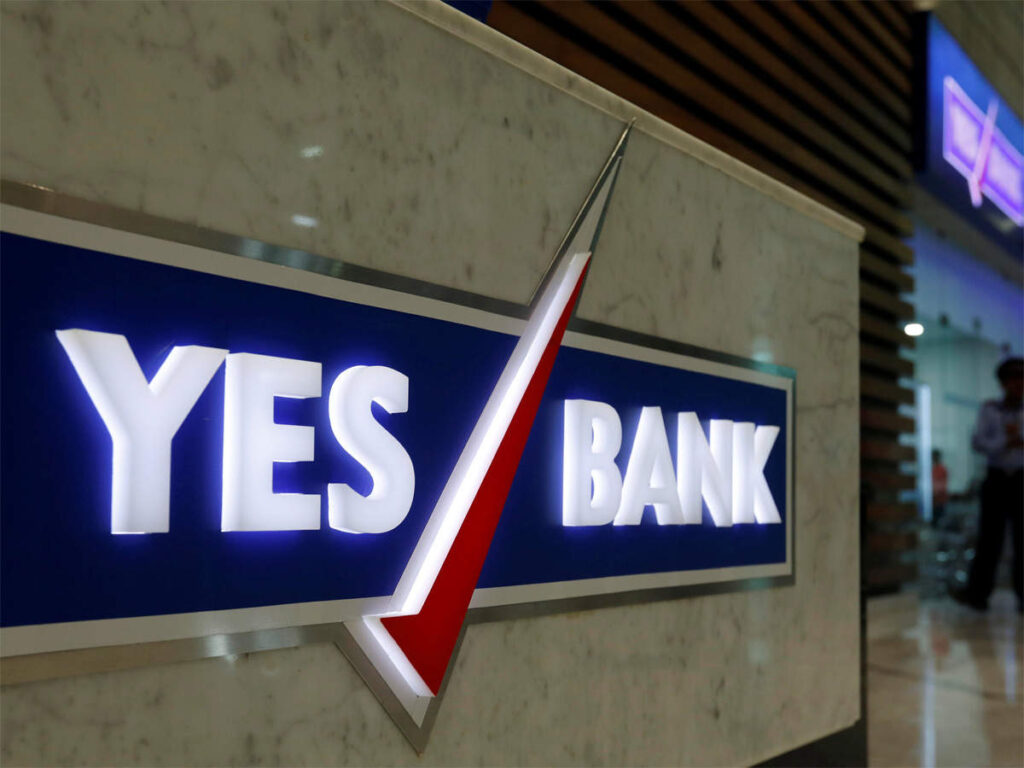On Friday 20th November 2020, Yes Bank shares were trading in the green, post a lower closing the previous day. This occurred during heavy buying activity in the banking sector. The shares rose by 1% to the day’s high of ₹14.42. The stock has provided 11% returns to investors in a month. However, the stock has fallen over 1% in one week and 69% since the beginning of the year.
Does this indicate that Yes Bank is making a comeback?
Let us look at the history.
In 1998, Rana Kapoor, Ashok Kapur and Harkirat Singh set up Dutch multinational banking firm Rabo Bank’s Indian operations. In 2003, the trio incorporated Yes Bank as a Public Limited Company. They set it up with a capital of ₹200 crores. Later on, Singh quit after Ashok was appointed as the non-executive chairman in his absence. Upon launching, Ashok and Rana formulated a plan to build a bank that could be sold after a few years to either Rabo or other international banks that didn’t have a large Indian presence.
Ashok Kapur was killed in the terrorist attacks that took place in Mumbai in 2008. Since then, Rana Kapoor became the only one remaining among the founder team to hold a leadership position at the bank.
Under his leadership, Yes Bank took small steps in building its corporate lending segment and focused on sectors like real estate, pharmaceuticals, renewable energy, electricals, and media. While Rana followed an aggressive route to expand the loans division, to achieve a very high growth rate, he was also able to balance the wants of businesses with the bank’s need for prompt repayments. He used a simple strategy: provide big loans to those who asked for it but make borrowers pay a very high fee upfront in the range of 2-10% of the sanctioned amount. He also charged interest rates of up to 16% p.a., around 3% higher than the rates of competitors. The bank grew expeditiously while their loans granted ballooned. Advances rose at an alarming rate of 334% between FY 2014 and FY 2019. This led to the stock rising and being traded at high prices.
Internally, trouble began brewing among the promoters. Since Ashok’s promoter shareholding had been passed on to his family after his death, his wife Madhur initially proposed appointing their daughter Shagun Gogia on the bank’s board. Rana opposed this appointment, which was then accepted by Yes Bank’s board. Subsequently, he also wanted Ashok family’s shareholding to be moved to non-promoter status. The family argued that the rights that belonged to Ashok, which also included a powerful clause to nominate three directors jointly, be passed on to them. The matter went up to the Bombay High Court, which in 2015 issued an order in the family’s favour. The order also discussed the option of both promoters bringing down their shareholding to below 10 percent taking into account the bank’s long-term interests. Rana was quick to state that that he will never sell his shares.
From 2018 to 2019, the bank had added 7.56 lakh new retail buyers and its bottom line had increased over 35 per cent annually over ten years. In September 2018, a whistle-blower raised allegations of irregularities in Yes Bank’s operations. The issues raised included misclassification of bad loans and potential conflict of interests with respect to Rana Kapoor. The bank’s audit committee engaged JLN US & Co. (JLN), a Vadodara-based auditor to independently examine the matter, but JLN informed the board that it has not been able to prove some of the allegations raised.
Eventually, a large number of borrowers started defaulting. Simultaneously, customers were withdrawing large amounts due to the rise in uncertainty surrounding Yes Bank. This resulted in the credit-deposit ratio crossing 100% in 2018-19.
In 2015, RBI had conducted its first asset quality review (AQR) of banks to find corporate loan accounts having severe financial weakness that were classified as standard accounts on the books of the lenders. Yes Bank was compelled to disclose that non-performing loans stood at an alarming ₹4,930 crores. RBI and statutory auditors failed in avoiding this crisis.
Some of the borrowers included Cafe Coffee Day, CG Power, Jet Airways, DHFL and IL&FS, all companies or consortiums that have fallen apart and caused tremendous stress in India’s financial sector over the past couple of years. The RBI had constantly questioned the bank for under-reporting its Non-Performing Assets, which were approximately ₹3,277 crore in 2018-2019.
By the end of September 2018, the RBI refused to approve an additional three-year term for Rana Kapoor as the chief executive. Deutsche Bank AG’s former India CEO Ravneet Gill was brought in to replace him. At that time, the Common Equity Tier 1 ratio was just 8.4 percent, the lowest in the industry and just above the minimum regulatory requirement.
In July 2019, Yes Bank reported a 91% drop in first-quarter profit, as provisions surged and asset quality deteriorated sharply; gross bad loan ratio stood at 5%. Post this, Gill announces that the bank is in talks with private equity firms, strategic investors and family offices to raise additional capital. At the end of October, the bank received a binding investment offer of $1.2 billion from a global investor. This led to the stock rising by nearly 40%. Rana Kapoor pledged his entire 7.34% stake against a loan, which led to the stock plunging. In September, Kapoor sold 2.75% stake through the open market, thus reducing his overall equity to 6.89%.
In November 2019, Rana Kapoor and promoter entities Yes Capital and Morgan Credits sold their remaining stakes in the company in the open market. The stock advanced significantly after Rakesh Jhunjhunwala had bought 1.30 crore shares, or 0.51 per cent stake in Yes Bank a few days earlier. Similarly, HDFC Mutual Fund purchased heavily.
In March 2020, the bank was placed under moratorium, with RBI taking over from its board for 30 days and imposing limits on withdrawals to protect depositors. Yes Bank users had their transactions capped at ₹ 50,000 for a month. RBI had superseded the board of Yes Bank and appointed Prashant Kumar, ex-DMD and CFO of SBI, as the administrator. Subsequently, RBI appointed R Gandhi, a former Deputy Governor, Ananth Narayan, an associate professor at SP Jain Institute of Management and Research to the board of the bank.
Rana Kapoor was arrested that month by the Enforcement Directorate after two days of questioning in the bank scam worth ₹ 4,300 crore. Yes Bank had allegedly used public money to buy DHFL debentures worth ₹ 3,700 crore amidst the NBFC crisis. His other crimes included evergreening of loans, huge exposure to risky assets such as real estate, transferring collateral securities on his own name and promoting his daughter’s business using bank funds.
After the moratorium was lifted, a consortium of lenders invested ₹10,000 crore as capital. These included SBI, HDFC, ICICI Bank, Kotak Mahindra Bank, Axis Bank, IDFC First Bank, Federal Bank and Bandhan Bank
ANNUAL KEY PERFORMANCE INDICATORS
|
Year |
Total Advances |
Gross NPA |
Net NPA |
EPS |
ROE |
|
2020 |
1,71,443 crore |
16.80% |
5.03% |
(56.1) |
(81.8) |
|
2019 |
2,41,500 crore |
3.22% |
1.86% |
7.4 |
6.5% |
|
2018 |
2,03,534 crore |
1.28% |
0.64% |
18.4 |
17.7% |
|
2017 |
1,32,263 crore |
1.52% |
0.81% |
15.8 |
21.5 % |
|
2016 |
98,210 crore |
0.76% |
0.29% |
12.1 |
19.9% |
|
2015 |
75,550 crore |
0.41% |
0.12% |
9.9 |
19.0% |
|
2014 |
55,633 crore |
0.31% |
0.05% |
9.0 |
25.0% |
Source: (Yes Bank Annual Report, 2020)
The above table reflects clearly that substantial risky advances were not provided for when necessary and were carried forward. The risk caught on in FY 2019-20 after detailed investigation took place.
In March, SBI shared that they would be taking over 49% of Yes Bank. However on 10th September, Chairman Sunil Mehta announced that they had repaid ₹50.000 crore to RBI availed through Special Liquidity Facility. After the recent FPO, the share capital of Yes Bank doubled to ₹2,505 crore, resulting in SBI having a 30% stake.
Last month, Prashant Kumar announced that Yes Bank would be targeting to reduce operational expenses by 20% in FY21 by rationalising branches and ATMs, giving up unwanted leased spaces, and renegotiating rents.
On 30th November, Yes Bank will be among 12 stocks which will be added to MSCI India Index. This announcement helped the stock gain momentum as inclusion in the MSCI Global Standard Index, which is widely used by international fund houses for benchmarking global equities portfolios. This could attract fresh inflows of capital from overseas.
Yes Bank has a major exposure in agriculture loans. Loans given for this purpose have been highly beneficial. With development in rural areas supported by ideal weather conditions, it is likely to fetch good returns to the bank.
Considering the strengths such as large number of branches in urban as well as rural areas, possibility of revival of real estate in the near future and encashing of collateral properties bringing much needed cashflows in the system, Yes Bank may still have a chance to be the major market player it once was. Strict regulatory compliance overseen by authorities has resulted in a relatively more transparent business off late. This trend is expected to continue, bringing a better future for the bank.
Follow Us @




